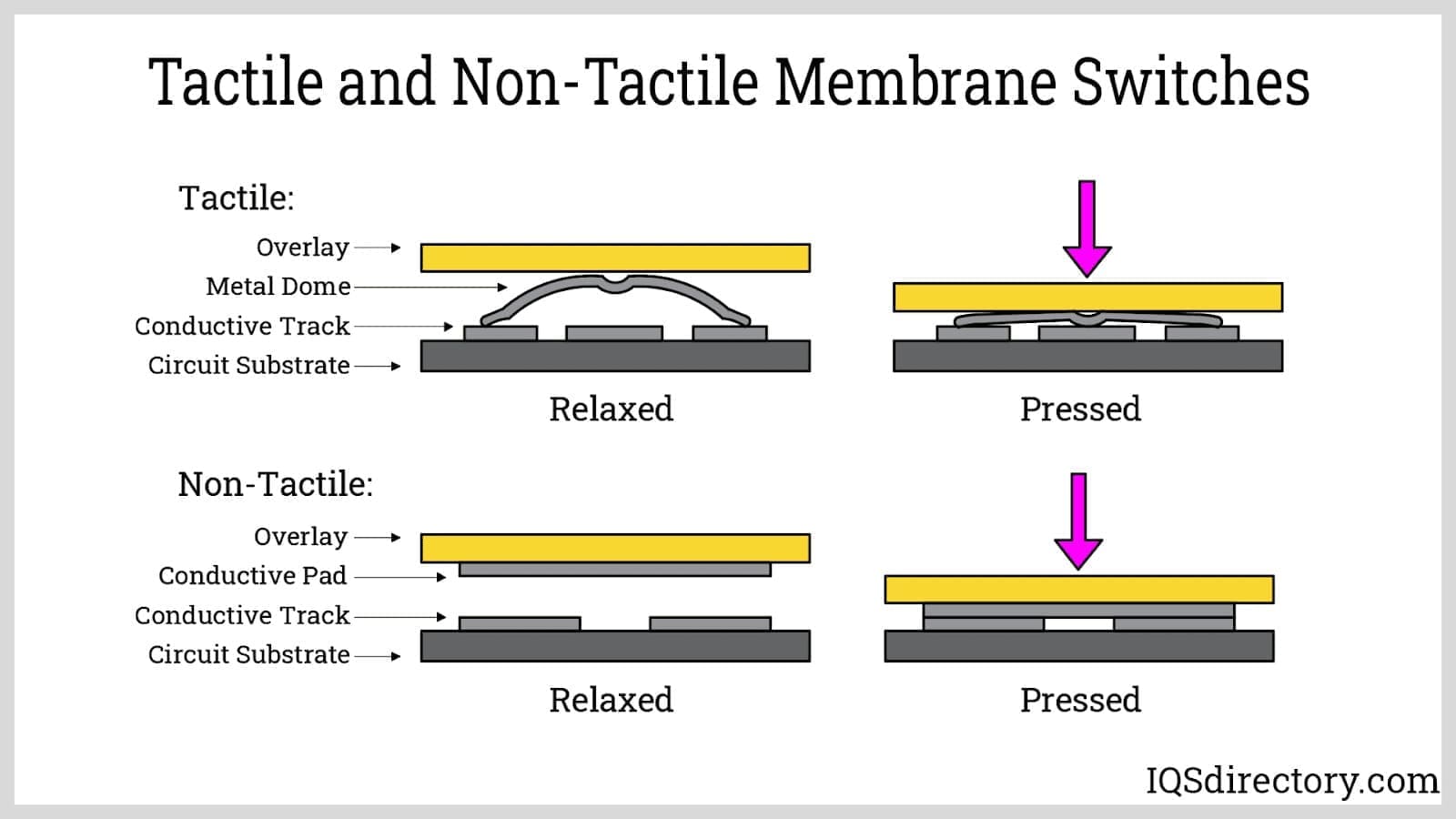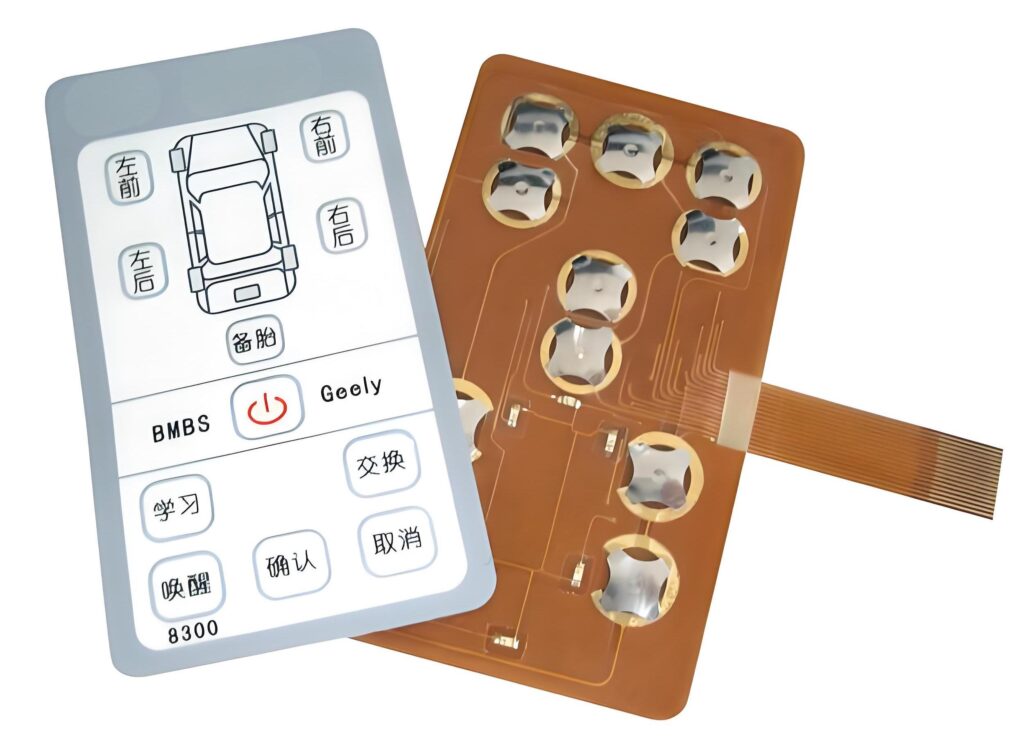Emerging trends in membrane switch development
Wiki Article
The Production Process Behind Membrane Layer Switch Over: What You Need to Know
The manufacturing process behind membrane changes combines careful design, product choice, and quality control. It starts with understanding the details of membrane layer switch design and proceeds via different stages, including material choices and printing strategies. Each phase plays an important function in ensuring performance and sturdiness. The complexities of layer building and construction and the strenuous screening criteria may expose insights that are not instantly evident. What exists past these foundational aspects?Recognizing Membrane Change Style
Membrane layer buttons might show up simple at first glimpse, their style entails intricate considerations that guarantee performance and toughness. The layout procedure starts with a detailed understanding of user demands, consisting of the user interface's designated application and ecological factors. Functional designs is a crucial aspect, as the format needs to promote simplicity of use while ensuring that tactile comments satisfies user expectations.Moreover, the layering of components, such as visuals overlays, sticky layers, and conductive traces, need to be exactly engineered. membrane switch. This split arrangement not only influences the switch's responsiveness yet additionally influences its long life. Interest is provided to the sealing techniques used to shield versus wetness and dust, which could compromise efficiency. In addition, style considerations include visual appeals, where color pattern and visual clarity boost customer experience. Eventually, the design of membrane switches over balances functionality, customer experience, and toughness, ensuring that they fulfill the demands of different applications successfullyMaterials Made Use Of in Membrane Switch Production
When selecting products for membrane layer switch production, it is necessary to consider both efficiency and longevity. The primary products consist of polyester and polycarbonate films, which give versatility and toughness. These movies are commonly covered with adhesive to guarantee appropriate bonding to substrates. Conductive inks, typically made up of silver or carbon, are crucial for creating electrical links within the button, permitting reputable operation.Additionally, a protective layer, such as a difficult layer, is frequently related to improve scrape resistance and longevity. The option of backing product, such as acrylic or foam, can considerably affect the switch's tactile feel and total user experience. Numerous ecological elements, consisting of temperature and moisture, need to guide material selection to guarantee peak performance in certain applications. Inevitably, the right combination of materials contributes to the membrane switch's performance and life-span, making educated choices vital for makers.The Printing Refine: Creating Video and Text
The printing process in membrane switch manufacturing plays a considerable duty in generating high-quality graphics and text. Different visuals layout strategies are used to assure aesthetic charm and performance, while cautious ink choice techniques are necessary for longevity and efficiency. Recognizing these aspects is essential for accomplishing finest cause membrane button layout.Graphic Layout Techniques
Graphic style techniques play an essential duty in the printing procedure of membrane buttons, as they specify how graphics and message will inevitably appear on the last item. Effective visuals style entails the critical use of font styles, shades, and formats to improve readability and aesthetic charm. Developers frequently make use of vector graphics for scalability, ensuring that images stay sharp at different sizes. Additionally, interest to comparison and positioning is crucial, as it affects customer interaction and visual top quality. The consolidation of branding elements, such as logo designs, should be taken care of with like keep brand honesty. In general, thoughtful graphic style strategies contribute substantially to the capability and beauty of membrane layer buttons, influencing user experience and product performance.Ink Choice Approaches
Selecting the appropriate ink is essential for achieving the desired aesthetic top quality and sturdiness in membrane switch production. Different ink kinds are made use of, consisting of solvent-based, water-based, and UV-curable inks. Each kind supplies unique qualities, such as resistance, adhesion, and flexibility to environmental factors. Solvent-based inks are often preferred for their toughness and vivid shades, while water-based inks are a lot more eco-friendly however may have constraints in bond. UV-curable inks give quick healing and durable performance. In addition, color matching strategies ensure that the chosen inks align with layout specifications. Inevitably, the option of ink have to think about elements such as application technique, substrate compatibility, and end-use needs to achieve premium results in membrane layer switch graphics and message.Layer Building and Setting Up

Product Selection Refine
A mindful selection of materials is essential in the production process of membrane switches, as it straight affects functionality and longevity. The primary materials utilized consist of polyester, polycarbonate, and various conductive inks. Polyester is commonly preferred for its excellent resistance to chemicals and abrasion, making it appropriate for extreme settings. Polycarbonate, on the other hand, provides superior clarity and impact resistance, which is helpful for applications calling for presence and robustness. Conductive inks, usually made up of silver or carbon, you can find out more are vital for creating reputable electric pathways. Furthermore, the option of sticky products influences the general honesty of the switch - membrane switch. Assessing elements such as environmental exposure, tactile comments, and aesthetic demands guides manufacturers in selecting the very best materials for their details applicationsLayer Attachment Methods
Sticking layers in membrane switch construction is a vital procedure that assures performance and longevity. Numerous bond methods are employed to safeguard excellent bonding in between layers, which usually include using adhesives, warmth, and stress. Pressure-sensitive adhesives (PSAs) are typically used for their ease of application and prompt bonding abilities. Additionally, thermal bonding strategies can be applied, where heat is made use of to trigger adhesive residential or commercial properties, safeguarding a strong bond. The choice of bond method greatly relies on the products entailed and the particular application requirements of the membrane layer button. Appropriate alignment and uniform application of adhesives are important to protect against flaws, securing the switch runs efficiently throughout its desired lifespan.Quality Assurance Actions
Ensuring top quality control during the layer building and construction and assembly of membrane buttons is essential for preserving efficiency and integrity. This process normally entails several important measures, including complete inspections at each phase of production. Makers make use of advanced testing techniques, such as peel tests and bond analyses, to validate the honesty of layer bonds. Additionally, visual evaluations are carried out to determine any kind of issues in printing or product inconsistencies. Ecological conditions, such as temperature and humidity, are thoroughly monitored to ensure optimal treating and attachment. Furthermore, normal calibration of devices helps preserve precise manufacturing requirements. By executing these quality assurance steps, producers can considerably lower the danger of product failure, assuring that the last membrane layer switches meet the called for specifications and customer assumptions.Testing and Quality Assurance Measures

Advancements in Membrane Switch Modern Technology
As developments in innovation remain to advance, membrane switches are gaining from ingenious growths that enhance their functionality and individual experience. One remarkable development is the combination of capacitive touch innovation, which enables for even more instinctive and responsive user interfaces. This shift not only improves visual appeals however likewise decreases mechanical deterioration, prolonging the lifespan of the switches.Additionally, advancements in graphic overlay products have resulted in enhanced sturdiness and resistance to environmental elements such as moisture and UV light. These products now supply improved clearness and brightness, further boosting the aesthetic appeal.Furthermore, the consolidation of wise technology is changing membrane layer changes into interactive control board, making it possible for connectivity with IoT devices. This connection promotes a seamless customer experience, leading the way for applications in numerous markets, from healthcare to customer electronics. Jointly, these advancements position membrane layer changes as crucial parts in modern tool style.Regularly Asked Concerns
How Lengthy Does the Membrane Switch Over Manufacturing Refine Take?
The duration of the membrane layer switch manufacturing process can differ significantly. Variables such as complexity, products used, and manufacturing volume influence timelines, with regular production ranging from a couple of days to several weeks for conclusion.What Are the Common Applications for Membrane Layer Switches?
Membrane layer switches are frequently used in numerous markets, including vehicle controls, family home appliances, clinical devices, and consumer electronic devices (membrane switch). Their versatility and toughness make them perfect for applications needing straightforward interfaces and dependable efficiency check my blog in varied environmentsCan Membrane Changes Be Custom-made for Specific Needs?

What Is the Life expectancy of a Normal Membrane Layer Switch Over?
The life-span of a regular membrane switch varies, but usually, it ranges from 1 to 5 million cycles. Elements such as usage, atmosphere, and worldly high quality significantly influence toughness and general efficiency over time.

Are Membrane Changes Eco Pleasant?
The ecological friendliness of membrane switches differs. Some products utilized may not be recyclable, while others can be eco-friendly. The total influence depends upon manufacturing materials and practices, demanding cautious consideration throughout choice and disposal. The manufacturing procedure behind membrane switches over combines cautious design, product selection, and top quality control. It begins with understanding the details of membrane button style and progresses with various phases, including product choices and printing strategies. When selecting materials for membrane layer switch production, it is vital to contemplate both efficiency and resilience. A mindful selection of materials is essential in the manufacturing procedure of membrane buttons, as it directly affects performance and resilience. The selection of adhesion technique greatly depends on the materials included and the specific application demands of the membrane layer switch.Report this wiki page